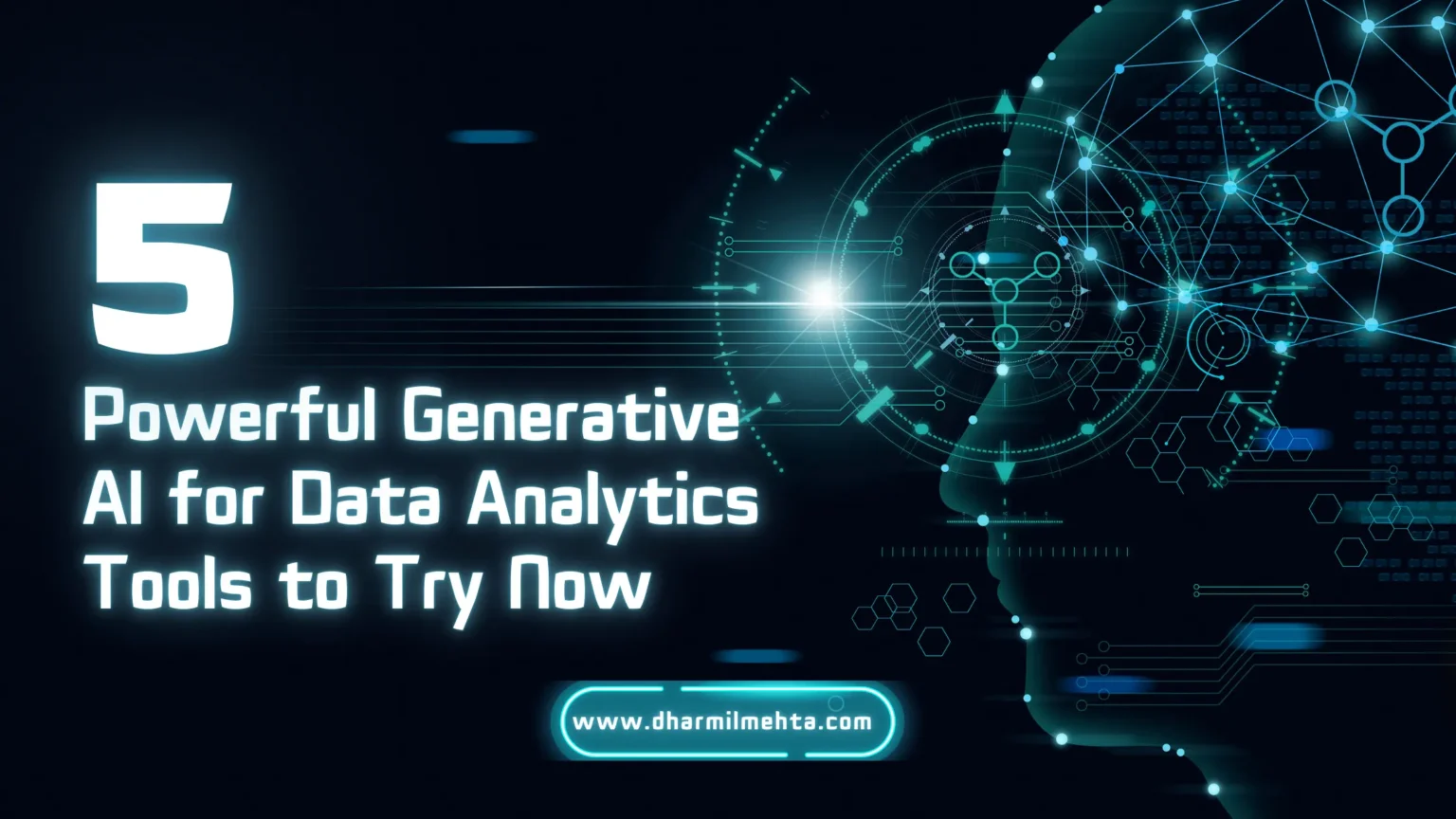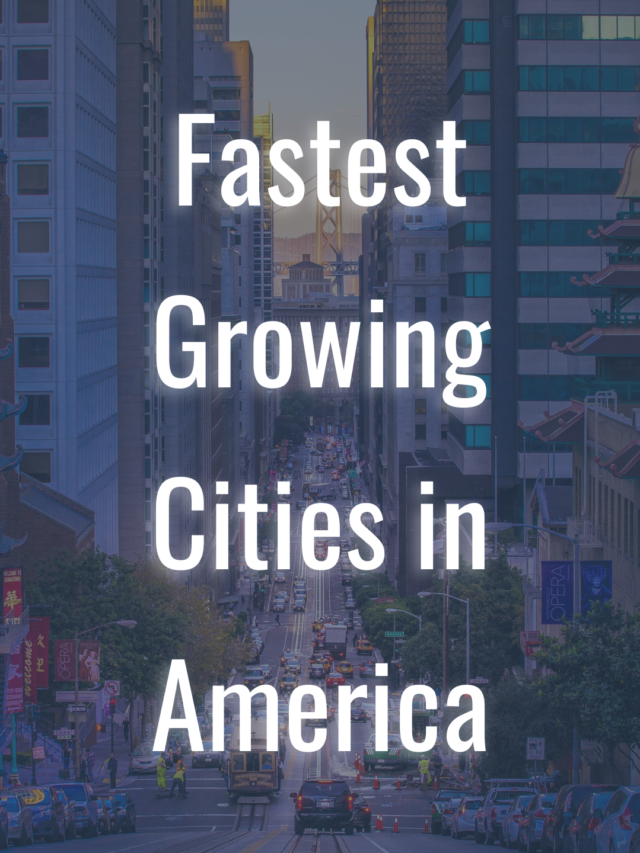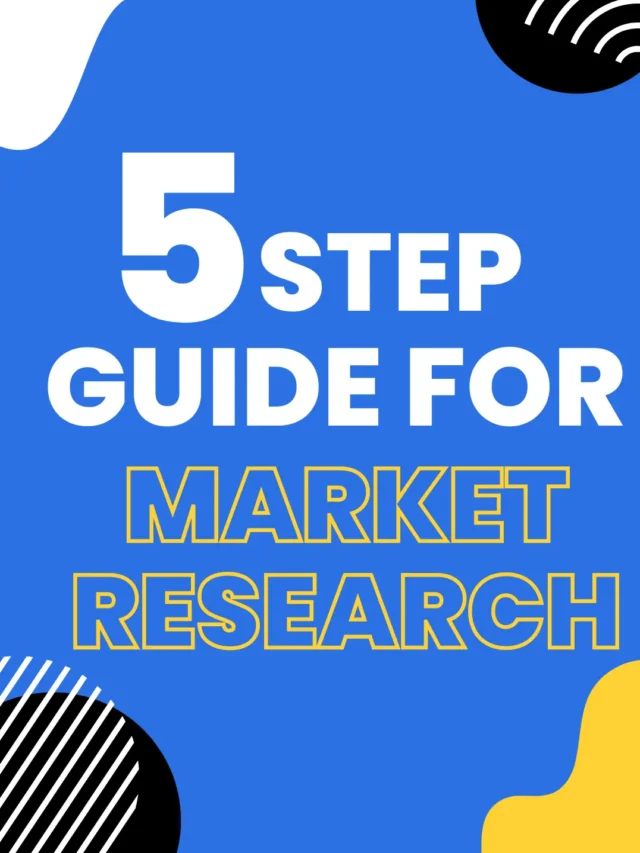In the dynamic realm of data analytics, staying ahead requires leveraging the most advanced tools available. Enter generative AI—a transformative technology reshaping how we analyze and interpret data. This guide delves into five groundbreaking generative AI for data analytics tools you should explore now to elevate your data insights and drive impactful decisions.

Understanding the Power of Generative AI in Data Analytics
Overview of Generative AI and Its Impact on Data Analytics
Generative AI is a branch of artificial intelligence capable of creating new content and insights from pre-existing data. Unlike traditional AI, which typically follows pre-defined rules and patterns, generative AI employs complex algorithms to create novel outputs, making it particularly potent for data analytics.
Why Generative AI is a Game-Changer for Data Insights
The integration of generative AI in data analytics brings several advantages. It enhances data accuracy, uncovers hidden patterns, and provides predictive insights that are otherwise difficult to obtain. This is particularly beneficial for businesses aiming to stay competitive in a data-driven world.
Benefits of Generative AI for Data Analytics
Unlocking the Benefits of Generative AI for Data Analytics
The benefits of generative AI for data analytics are manifold. These tools offer unparalleled capabilities in processing and interpreting vast datasets, making them invaluable for industries ranging from finance to healthcare.
How Generative AI Enhances Data Analysis Accuracy
Generative AI algorithms can process data at an unprecedented scale and speed, improving the accuracy of data analysis. By identifying subtle correlations and trends, these tools enable more precise predictions and informed decision-making.
Maximizing Data Insights with Generative AI Technologies
Harnessing generative AI technologies allows businesses to maximize their data insights. These technologies can generate sophisticated models and simulations, providing deeper understanding and actionable intelligence from complex data sets.
Top Generative AI Tools for Data Analytics
Exploring the Best Generative AI Platforms for Data Analytics
To navigate the vast landscape of generative AI tools for data analytics, it’s crucial to identify the top platforms that offer robust capabilities and user-friendly interfaces. Below, we explore five leading generative AI tools transforming the field of data analytics today.
Top Generative AI Tools Revolutionizing Data Analytics Today
- OpenAI GPT-4: Renowned for its conversational abilities, GPT-4 excels in data analysis by interpreting and generating natural language responses. This tool is invaluable for generating reports and extracting insights from unstructured data.
- IBM Watson Studio: A powerhouse in the AI space, Watson Studio integrates AI-powered data analytics and predictive analysis AI. Its robust platform supports various data analytics processes, from data preparation to model deployment.
- Google Cloud AI: Offering a suite of AI tools for data analysis, Google Cloud AI provides advanced machine learning models and analytics tools that enhance predictive analytics and data management.
- DataRobot: This automated machine learning platform excels in AI-driven decision making. It simplifies the model-building process and provides accurate predictive analysis AI, making it a favorite among data scientists.
- H2O.ai: Known for its open-source offerings, H2O.ai provides tools for AI and predictive analytics. It supports deep learning and AI-powered predictive analytics, ensuring high performance in data-intensive tasks.
Comparing Generative AI Tools for Superior Data Insights
Each generative AI tool offers unique features tailored to different analytics needs. Comparing their capabilities can help businesses choose the right tool for their specific requirements, whether it’s for enhancing business intelligence or optimizing financial data analysis.
How Generative AI Enhances Data Analytics
Transforming Data Analytics with Generative AI Techniques
Generative AI techniques transform traditional data analytics by introducing innovative ways to process and interpret data. These techniques enable more nuanced and accurate data analysis, leading to better business outcomes.
How Generative AI Can Revolutionize Your Data Strategy
Incorporating generative AI into your data strategy can revolutionize how you manage and utilize data. By automating complex analytical tasks and generating predictive insights, generative AI empowers businesses to make data-driven decisions with confidence.
Generative AI for Advanced Data Analytics: What You Need to Know
Understanding the advanced capabilities of generative AI is essential for leveraging its full potential in data analytics. This includes knowledge of its applications in various data management processes and its impact on data-driven decision-making.
Generative AI Applications in Data Analytics
Diving into Generative AI Applications for Data Management
Generative AI applications in data management streamline data workflows and improve efficiency. These applications automate data cleaning, integration, and analysis, allowing analysts to focus on deriving insights rather than processing data.
Using Generative AI to Optimize Data Analytics Workflows
Optimizing data analytics workflows with generative AI involves integrating AI tools that can handle repetitive tasks and generate insights quickly. This leads to faster, more accurate data analysis and improved operational efficiency.
Generative AI in Real-Time Data Analytics: A New Frontier
Real-time data analytics powered by generative AI represents a new frontier in the field. By processing data in real-time, businesses can respond to trends and changes instantly, gaining a competitive edge in fast-paced markets.
Generative AI for Business Data Insights
Leveraging Generative AI for Enhanced Business Data Insights
Businesses can leverage generative AI to gain deeper insights from their data. These insights can drive strategic decisions, enhance customer experiences, and improve overall business performance.
How Generative AI Improves Business Analytics Performance
Improving business analytics performance with generative AI involves utilizing AI-driven models to analyze data more effectively. This results in more accurate forecasts, better risk management, and enhanced decision-making capabilities.
Generative AI for Financial Data Analysis: A Powerful Tool
Generative AI Tools for Data Visualization
Data visualization is a critical aspect of data analytics, and generative AI tools excel in creating stunning visual representations of complex data. These visualizations help stakeholders understand data insights more easily and make informed decisions.
Creating Visual Masterpieces with Generative AI for Data
Using generative AI for data visualization transforms raw data into visual masterpieces. These tools can generate intricate charts, graphs, and infographics that convey data stories compellingly and clearly.
Impact of Generative AI on Data Analytics Strategies
How Generative AI is Shaping Data Analytics Strategies
Generative AI is shaping the future of data analytics strategies by introducing new methods for data processing and interpretation. Its ability to generate predictive models and uncover hidden patterns is revolutionizing how businesses approach data analytics.
The Role of Generative AI in Data-Driven Decision Making
The role of generative AI in data-driven decision-making is pivotal. By providing accurate and timely insights, generative AI enables businesses to make informed decisions that drive growth and innovation.
Generative AI for Predictive Data Analytics
Harnessing Generative AI for Predictive Data Insights
Harnessing generative AI for predictive data insights allows businesses to forecast trends and behaviors with greater accuracy. This capability is essential for planning, risk management, and strategic decision-making.
Improving Forecast Accuracy with Generative AI
Improving forecast accuracy with generative AI involves using advanced algorithms to analyze historical data and predict future outcomes. This leads to more reliable forecasts and better preparation for future scenarios.
Generative AI for Customer and Marketing Analytics
Generative AI and Data Analytics in Marketing: A Winning Combination
Combining generative AI and data analytics in marketing creates a powerful synergy. These tools can analyze customer data, generate personalized marketing strategies, and predict consumer behavior, leading to more effective marketing campaigns.
Enhancing Customer Data Analytics with Generative AI
Enhancing customer data analytics with generative AI involves using AI to analyze customer interactions and preferences. This provides deeper insights into customer behavior and helps businesses tailor their offerings to meet customer needs.
Generative AI for Operational and Risk Management
Generative AI for Operational Data Analytics: Streamlining Processes
Generative AI can streamline operational data analytics by automating data processing tasks and generating actionable insights. This leads to more efficient operations and better resource management.
Risk Assessment in Data Analytics with Generative AI
Risk assessment in data analytics with generative AI involves using AI to identify potential risks and predict their impact. This helps businesses mitigate risks proactively and ensure operational stability.
Generative AI in E-commerce and Supply Chain
Generative AI in Data Analytics for E-commerce Success
In the e-commerce sector, generative AI enhances data analytics by providing insights into customer behavior, inventory management, and sales trends. This results in heightened customer satisfaction and accelerated business expansion.
Optimizing Supply Chain Data with Generative AI
Generative AI optimizes supply chain data by analyzing and predicting supply chain dynamics. This enables better inventory management, reduces operational costs, and ensures timely delivery of products.
Best Practices for Using Generative AI in Data Analytics
Top Tips for Effective Use of Generative AI in Data Analytics
For effective use of generative AI in data analytics, it’s essential to integrate these tools into your existing workflows, continuously monitor their performance, and stay updated with the latest advancements in AI technology.
Best Practices for Integrating Generative AI into Your Analytics Systems
Integrating generative AI into your analytics systems requires a strategic approach. This includes training your team on AI tools, ensuring data quality, and continuously refining your models based on feedback and new data.
Discover more about how data can transform your business by exploring the Top 10 Benefits of Data Analytics in Business Today on our detailed page.
Learn more about Top 4 Technology Trends in 2024 You Can’t Ignore
Generative AI for Business Growth and Innovation
How Generative AI Drives Business Growth through Data Insights
Generative AI drives business growth by providing deeper data insights that inform strategic decisions. These revelations enable companies to uncover fresh prospects, streamline processes, and elevate customer satisfaction.
Leveraging Generative AI for Strategic Business Innovation
Leveraging generative AI for strategic business innovation involves using AI to explore new business models, improve product offerings, and stay ahead of market trends. This fosters a culture of innovation and ensures long-term business success.
The Transformative Impact of Generative AI on Global Productivity
Generative AI is poised to significantly boost global productivity, potentially adding trillions of dollars in value to the economy. Recent research suggests that generative AI could contribute between $2.6 trillion and $4.4 trillion annually across 63 analyzed use cases—equivalent to the UK’s GDP in 2021, which stood at $3.1 trillion. This increase could amplify the overall impact of artificial intelligence by 15 to 40 percent. If generative AI is integrated into existing software used for various tasks beyond these use cases, the potential value could double.
Approximately 75 percent of the potential value from generative AI is concentrated in four key areas: customer operations, marketing and sales, software engineering, and R&D. In our analysis of 16 business functions, we identified 63 use cases where generative AI can effectively address specific business challenges, yielding measurable outcomes. Examples include supporting customer interactions, creating marketing content, and drafting code based on natural language prompts.
Generative AI will significantly impact all industry sectors, with banking, high tech, and life sciences expected to experience the greatest effects relative to their revenues. For instance, in banking, fully implementing generative AI use cases could generate an additional $200 billion to $340 billion annually. In retail and consumer packaged goods, the potential impact ranges from $400 billion to $660 billion annually.
Generative AI is set to transform the nature of work by enhancing individual capabilities and automating various activities. Current generative AI and other technologies could automate tasks that take up 60 to 70 percent of employees’ time. Previously, it was estimated that technology could automate half of employees’ work time. This acceleration is primarily due to generative AI’s improved ability to understand natural language, which is crucial for tasks that constitute 25 percent of total work time. As a result, generative AI is more impactful on knowledge work, which is typically associated with higher wages and educational requirements, than on other types of work.
The pace of workforce transformation is likely to quicken, given the growing potential for technical automation. Updated scenarios considering technology development, economic feasibility, and diffusion timelines indicate that half of today’s work activities could be automated between 2030 and 2060, with a midpoint around 2045, a decade sooner than previous estimates.
Generative AI has the potential to significantly boost labor productivity throughout the economy, but achieving this will require substantial investments in supporting workers as they transition to new roles or adapt to changing job activities. Depending on the adoption rate and the redeployment of worker time, generative AI could boost labor productivity growth by 0.1 to 0.6 percent annually through 2040. Integrating generative AI with other technologies, automated workflows have the potential to boost annual productivity growth by 0.5 to 3.4 percentage points. However, successful implementation will require managing worker transitions and other risks. If these challenges are addressed, generative AI could significantly contribute to economic growth and support a more sustainable and inclusive world.
The era of generative AI is just beginning, and the excitement surrounding this technology is tangible. While early pilots show promise, fully realizing its benefits will take time. Business and societal leaders must navigate the inherent risks of generative AI, determine the new skills the workforce will need, and rethink core business processes such as retraining and skill development.
Credit: Mckinsey Digital
Conclusion
Pioneering the Next Era of Data Analytics with Generative AI
The future of generative AI in data analytics is promising, with ongoing advancements set to further enhance its capabilities. Businesses that embrace generative AI today will be well-positioned to lead in tomorrow’s data-driven world.
How to Start Using Generative AI Tools for Data Analytics Success
To start using generative AI tools for data analytics success, identify the tools that best meet your needs, train your team on their use, and continuously iterate your analytics processes. By doing so, you can harness the full power of generative AI and achieve unparalleled data insights.
What are the top Generative AI Tools for Data Analytics?
Generative AI tools for data analytics include platforms like OpenAI’s GPT-3, Google’s BERT, IBM’s Watson, and Microsoft’s Azure AI, which help in analyzing and interpreting complex data sets for actionable insights.
How do Generative AI Tools for Data Analytics improve business performance?
Generative AI tools for data analytics enhance business performance by providing precise predictions, optimizing decision-making processes, and identifying trends and patterns that humans might overlook, leading to more informed and strategic business decisions.
What are the benefits of using Generative AI Tools for Data Analytics in marketing?
Using generative AI tools for data analytics in marketing can significantly improve customer targeting, personalize marketing campaigns, predict customer behavior, and enhance overall marketing strategies by analyzing vast amounts of customer data efficiently.
Can small businesses benefit from Generative AI Tools for Data Analytics?
Yes, small businesses can greatly benefit from generative AI tools for data analytics by gaining access to sophisticated data analysis capabilities that can help them compete with larger companies, make data-driven decisions, and streamline their operations.
How do Generative AI Tools for Data Analytics assist in predictive analytics?
Generative AI tools for data analytics assist in predictive analytics by using advanced algorithms to analyze historical data, identify patterns, and forecast future trends, enabling businesses to anticipate market changes and make proactive decisions.
Want to grow your business? Learn 12 Sustainable Business Practices to Transform Your Company.
Read more blogs on dharmilmehta.com












